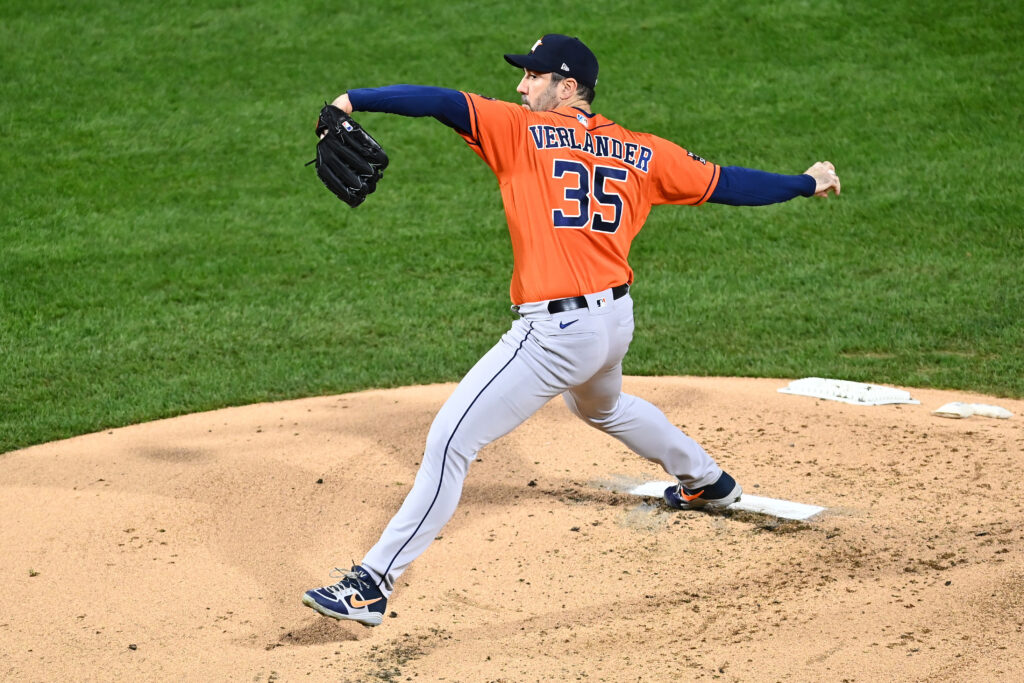
Justin Verlander strongly considered joining the Blue Jays last winter, to the point that the Jays may have been the runner-up to the Astros in the race to sign the future Hall-of-Famer. Toronto’s interest is still active a year later, and Sportsnet’s Shi Davidi writes that the Jays “remain engaged with” Verlander in the right-hander’s latest trip to the open market.
After a Cy Young Award-winning season, Verlander’s price tag has naturally gone up. Verlander landed a two-year, $50MM deal from the Astros last offseason despite missing virtually all of the 2020-21 seasons due to Tommy John surgery, and even though 2022 was Verlander’s age-39 season. Still, Verlander was more than worth the investment, as he posted one of the finest years of his incredible career and helped lead Houston to a World Series championship.
With his 40th birthday approaching in February, Verlander is reportedly looking for a three-year deal worth roughly $130MM, akin to the deal Max Scherzer received from the Mets when Scherzer was entering his age-37 campaign (Scherzer turned 38 last July). The Scherzer deal represents the highest annual average value for any contract in baseball history, so speculatively, it would seem likely that Verlander and his representatives would want to top that AAV even if by just a bit, in order to set a new benchmark.
It’s a steep asking price for any team to meet, even if Verlander is a unique case as an all-time great who is still pitching at an elite level this late into his career. Such a large AAV is a risk for a player who will be in action only once every five years, and if Verlander gets hurt or has any kind of performance dropoff, the contract could quickly start to look like an albatross.
Spending that much on Verlander would also set a new standard for the Blue Jays, whose payroll is already at a record high for the franchise. Adding a $43MM-ish salary to the ledger would also put the Jays over the luxury tax threshold for the first time in club history — Roster Resource projects Toronto’s current tax number at slightly over $201MM, so a big AAV for Verlander would send the Blue Jays well over the initial $233MM tax threshold.
As Davidi puts it, signing Verlander “may very well cut [the Jays] off from other significant moves.” That is no small matter for a team that several other needs to be addressed beyond the rotation, even if starting pitching is Toronto’s top need. The Jays could use some more outfield depth after trading Teoscar Hernandez, second base is a somewhat unsettled area, and the bullpen could use some more reinforcement even after the addition of Erik Swanson from the Mariners in the Hernandez swap. If ownership did allow the front office to spend up to the tax threshold, it can be argued that the extra money would be better served being spent on multiple players, rather than a single superstar in Verlander.
All this to be said, signing Verlander would still make some baseball sense for the obvious boost he’d bring to the pitching staff. Verlander, Alek Manoah, and Kevin Gausman would become arguably the top rotation trio in the sport, Jose Berrios would be an overqualified fourth starter if he can regain his form after a mediocre 2022 season, and the Jays might feel better about Yusei Kikuchi and Mitch White battling over one starting spot than entrusting two spots in the rotation to question marks. If payroll or roster needs are a concern, the Jays could look to cut some salary in other areas, plus Toronto could still trade from its catching depth to acquire more talent.
Credit : Source link






